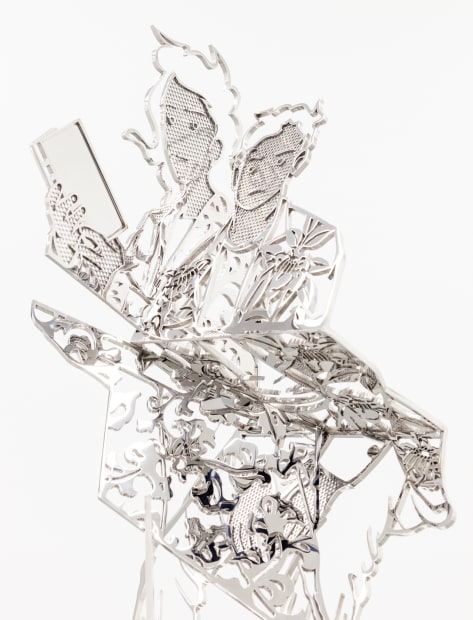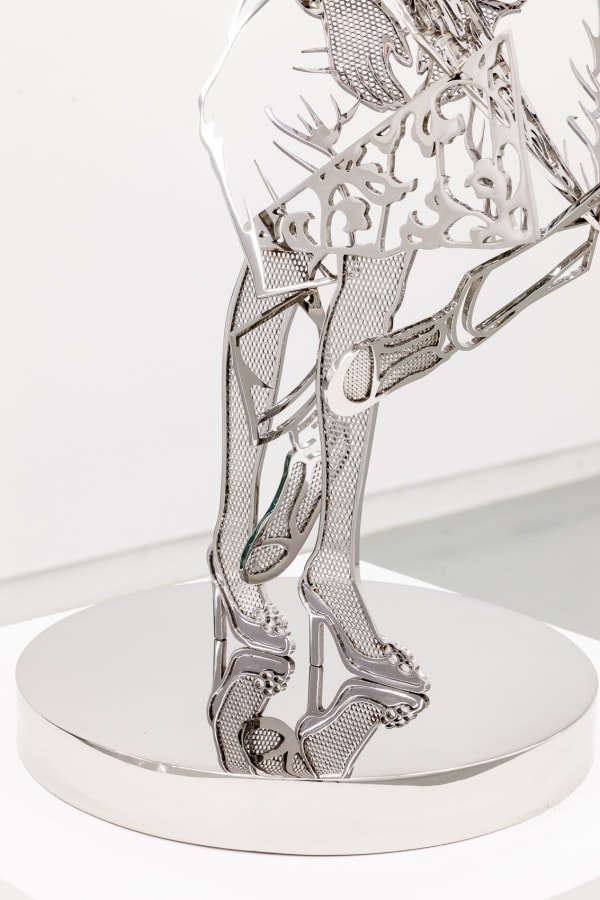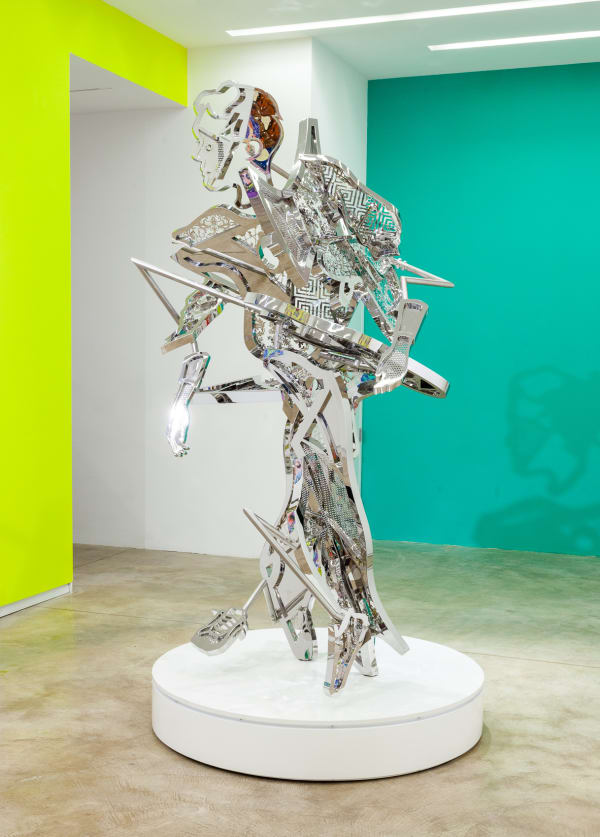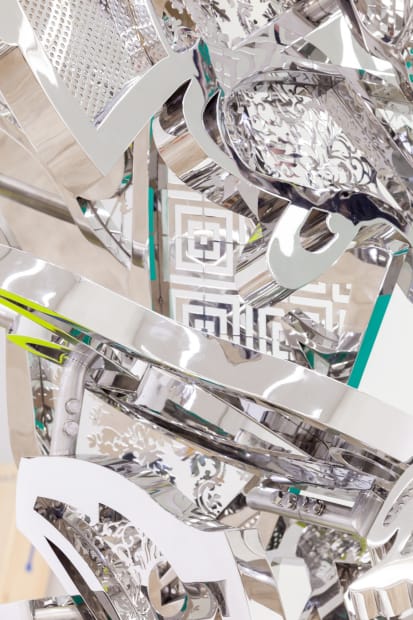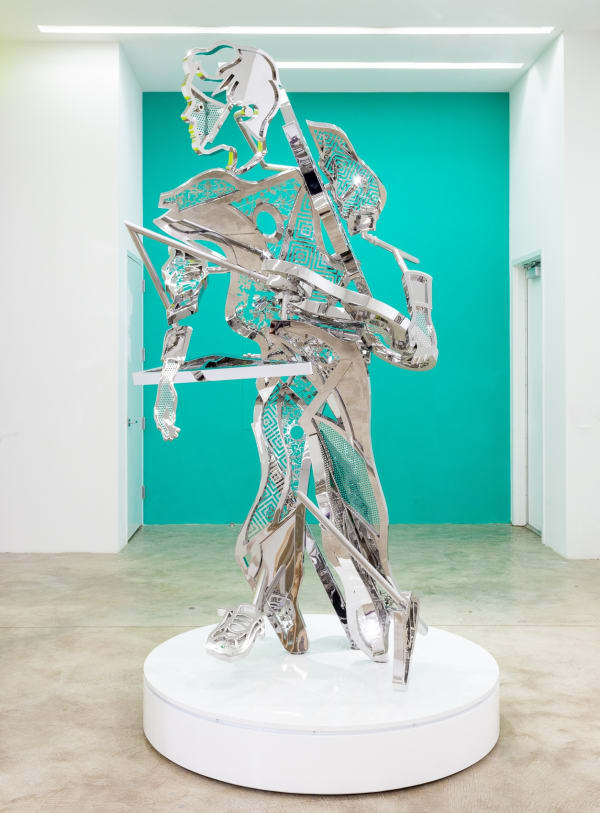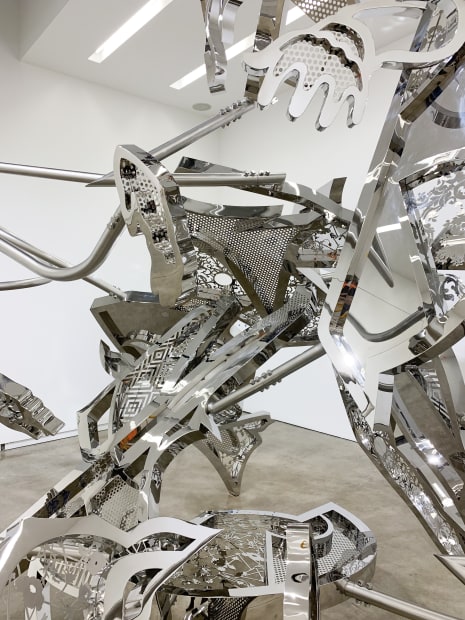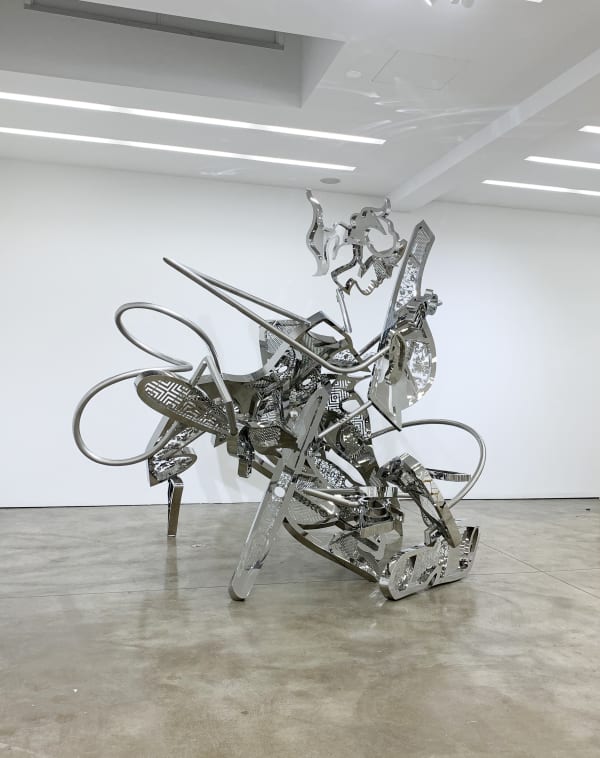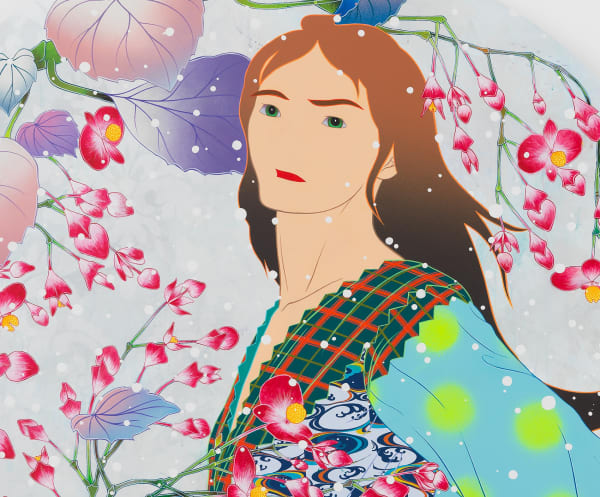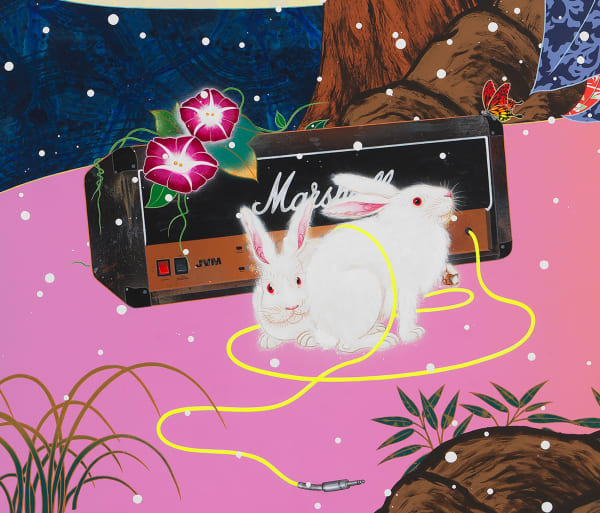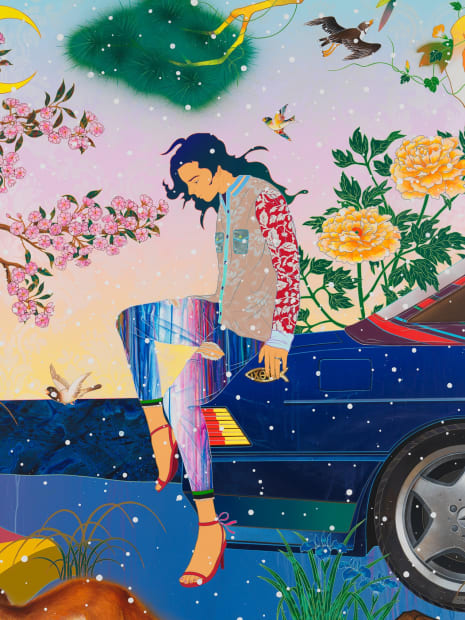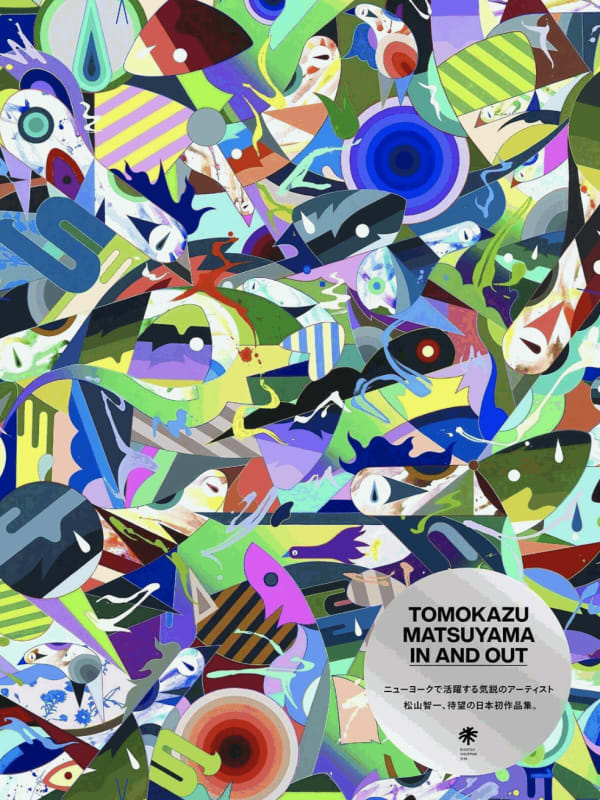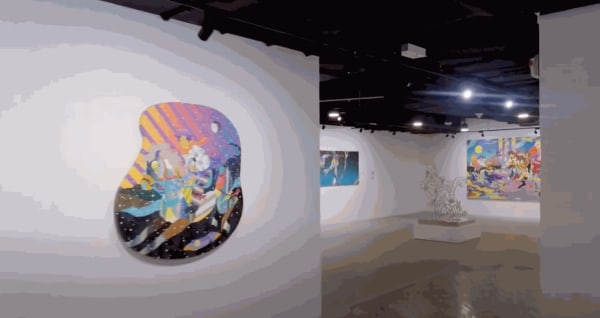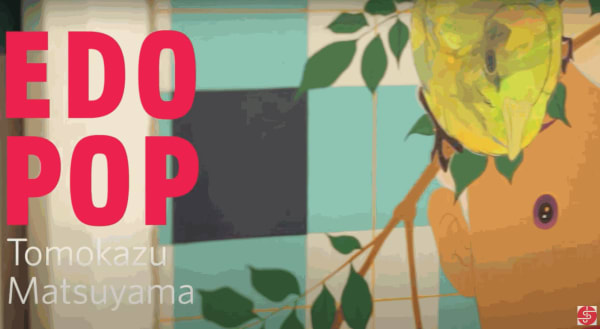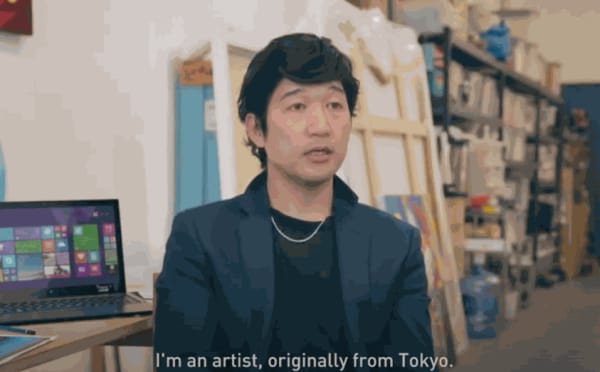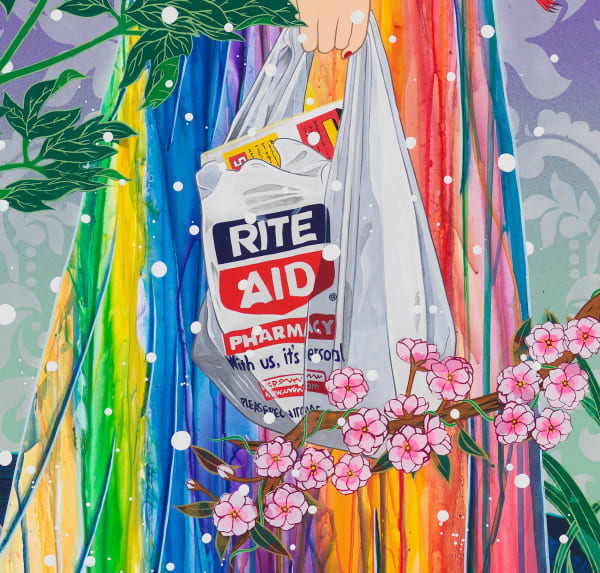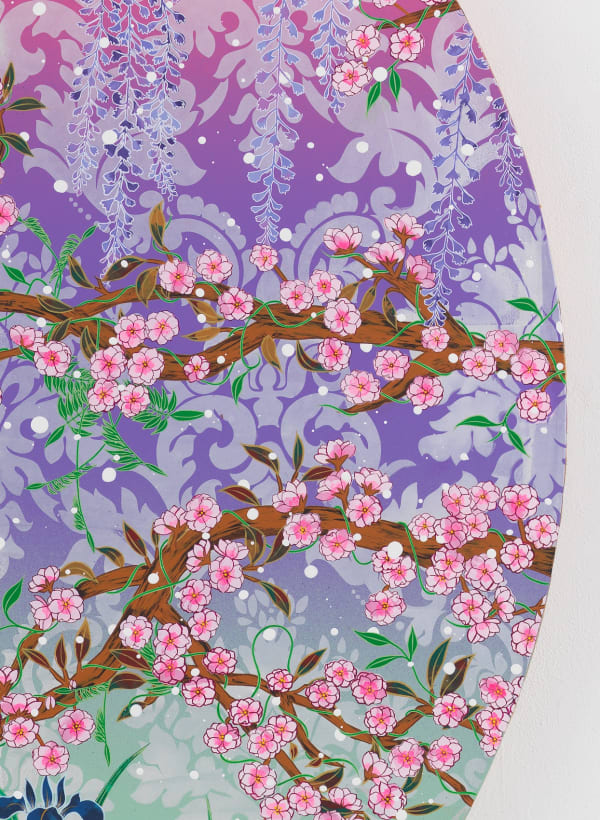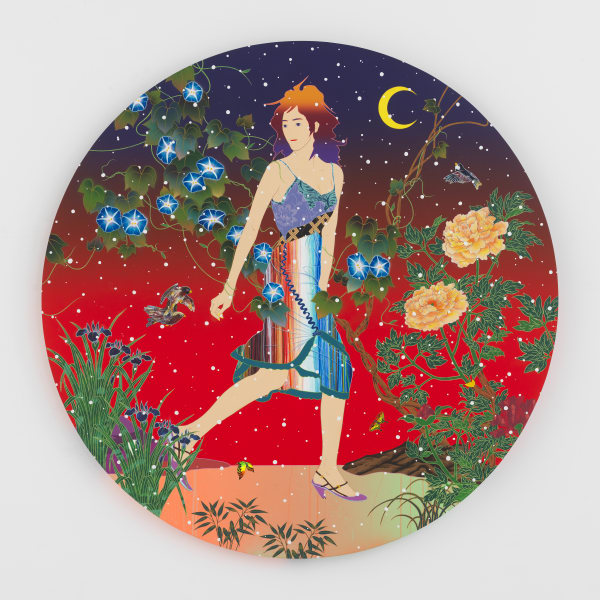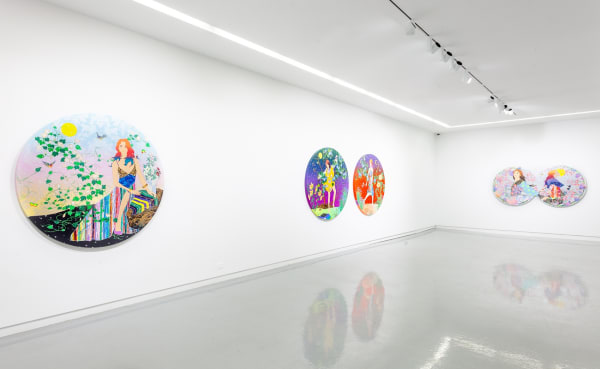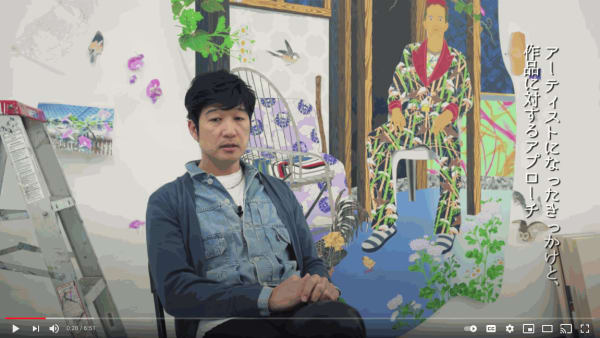-
-
The exhibition comes on the heels of the artist’s landmark solo exhibitions at two of China’s largest and most influential private museums, Long Museum Shanghai and Long Museum Chongqing. As with those exhibitions, the visual language Matsuyama deploys in the works in The Best Part About Us reflects the experiences of today’s nomadic diaspora—a global, intercultural community of wandering people who seek to understand their place in a world full of contrasting visual and cultural dialects
-
The Best Part About Us Virtual Walkthrough (Part I)
-
The Best Part About Us Virtual Walkthrough (Part II)
-

-

-

-
Tomokazu Matsuyama’s sculptural practice is informed by his process of questioning how his imagery might be experienced by viewers in three-dimensional space. He contemplates the total optical experience of his paintings and the logical relationships of the formal elements within them, creating mirrored forms and patterns that serve as an optical metaphor for his vision of cultural exchange and influence. The effect event extends beyond the piece, as its surfaces will take on the colors of its environment.
The uncanny process of recognizing the unfamiliar plays out in the presence of Matsuyama’s sculptures. Simultaneously familiar and alien, they hint exquisitely at the worlds we know, not from life but from a dream. Hand welded from sheets of stainless steel and hand bu ed to a mirror shine, these fragmented, labyrinthine forms are frozen in gestures that, again, relate to the “global us.” One, Matsuyama says, is a runner; another, a dancer. “Jogging is part of the Western experience. Dancing originates with Eastern culture. Both keep us mentally and physically connected,” he says.
In their distorted, curvilinear surfaces we see ourselves and wonder, like a glimpse into the Matrix, which side of the mirror is real.
That curiosity is essential to Matsuyama’s practice, as he invites us into an ever-evolving, global cultural conversation across a complex web of memories, visual languages, histories, dreams, and expectations.
This is seen dramatically with his Shinjuku Station installation Hanao-san, around which Matsuyama painted the ground with broad swaths of color to be reflected up onto the piece, or with the Meiji Shrine installation of Wheels of Fortune, which nearly camouflaged the piece, reflecting the complexity of nature across its perfect industrial surfaces. The works taking on their environments actively feels analogous to the way in which a person absorbs the culture around them, and perhaps in a hyper-literal sense is an optical illustration of how an artwork is affected by the context of its presentation.
-

-
-

-

-
Amalgamated from his vast mental and physical archive of iconographical material, Matsuyama’s painted worlds vivify his lived experience. His fresh approach to the language of figuration creates dual references to both our contemporary realities and our multiplicitous pasts, combining allusions to fashion models torn from the pages of glossy magazines; flora and fauna borrowed from Edo-period folding screens; open-source wallpaper patterns from the Internet; fragmented snippets of pop culture and celebrity life; frozen movements captured from the garments of centuries-old Buddhist sculptures; compositional strategies of the European Renaissance masters; aesthetic cues from Modernist art history such as shaped canvases and Abstract Expressionist techniques; and of course, those innumerable bits of branded trash ubiquitous on the streets of every city in the Western world.
Matsuyama’s carefully constructed, fictional landscapes welcome anyone inside to build their own narrative and discover their own meaning. What name should we give this aesthetic, which relates to nobody nowhere, yet is recognized by everyone everywhere?
"I call it the global us,” Matsuyama says.
This is Matsuyama’s mastery as an artist; by questioning what is familiar and what is foreign, he shows us pictures of others that are also refections of ourselves.
“Adaptation is my life,” Matsuyama says. “In Japan, I was brought up in Hida-Takayama City, a mountain area, a small, traditional place. Then in the mid-80s, I moved to Los Angeles. Surfng and skateboarding and young, fresh American culture were totally shocking to see. Then I came back to Tokyo and attended boarding school, where the atmosphere was of one mood, one way of thinking. Then when I moved to New York, the first thing I noticed was the mess, the chaos. Unlike Japan, garbage was everywhere. That was something I had never seen before.”
Curiosity is essential to Matsuyama’s practice, as he invites us into an ever-evolving, global cultural conversation across a complex web of memories, visual languages, histories, dreams, and expectations.
“My visual language is a community-based language,” Matsuyama says. “My paintings are not intended to inform viewers of specific messages nor narratives. These little fractions of everyday culture remind the viewers of narratives in their own life. That leads to ownership. It represents them. It represents me. It represents us. What’s the best part? It’s subjective.”
-

-

-
-
-

Tomokazu Matsuyama
This catalogue features full-color illustrations of works and exhibitions by the artist. A first-generation Japanese American who lives and works in New York City, Tomokazu Matsuyama (b. 1976, Gifu, Japan)... -

Tomokazu Matsuyama: In and Out
The bright, complex, pop-inspired images of Tomokazu Matsuyama’s signature style offer a contemplative look at cultural identity in the age of the internet. Born in Japan but living and working...
-
-
-
-

Tomokazu Matsuyama: Beyond Words
December 9, 2020Video of Tomokazu Matsuyama creating working on the Bowery Mural. -

VIRTUAL VISIT Oh Magic Night A solo exhibition by Tomokazu Matsuyama
VIRTUAL VISIT Oh Magic Night A solo exhibition by TOMOKAZU MATSUYAMA Presented by HOCA Foundation Video by James Goldman Music: Brite White, Randall Jones -

Edo Pop - Interview with Tomokazu Matsuyama by Japanese Society NYC
May 18, 2013Edo Pop: The Graphic Impact of Japanese Prints http://www.japansociety.org/event/edo... Tomokazu Matsuyama - interview (b. 1976, Japan; lives in New York, USA) http://matzu.net/ I don't remember when I became interested in... -

Tomokazu Matsuyama - Museum of Contemporary Art Sydney x Toshiba Documentary Film
August 27, 2019A documentary film for Toshiba 'Made in 17 hours' followed by a solo exhibition at Museum of Contemporary Art Museum, Sydney.
-
-
Tondos are a significant platform within Tomokazu Matsuyama’s painting practice. He began developing his ongoing series of tondos around the time when he first transitioned from the field of large-scale public art into regularly exhibiting in museum galleries. The requirements imposed by the so-called “white cube” seemed to Matsuyama to be arbitrary and restrictive, and perhaps intended to force every artist to show their work in the same way. One apparent rule was that paintings should adhere to existing traditions in terms of their shape; a rule that Matsuyama intentionally subverts with every one of his shaped canvases, each being unique to its own composition. Another was the rule that paintings had to be exhibited at “eye-level,” a subjective and rather arbitrary concept.
“The shape of a tondo allows me to play around,” Matsuyama says, recalling times when he hung circular canvases of various sizes high up on walls, above doors, or in other unexpected places in order to confound the expectations of viewers.
Matsuyama has also experimented with a double tondo form, an idea which again came about through play, Matsuyama says. “I was painting on plates. Accessibility is a crucial language for me. I wondered, what if I blend two together, and it looked like an infinity sin. It worked. The tondo is a minimal form, which I like, and which relates to Western Minimalist painting, but this double tondo was also interesting because it resulted in something that was a bit more complex.”
The tradition of the circular painting, or tondo, relates to Western art history, and was especially popular amongst Renaissance painters in the 15th century. To Matsuyama, the form also relates to the Japanese tea ceremony. Japanese tea platters can be circular, or they can be shaped. They are not intended to be exactly the same. The Japanese tea house is also designed so you have to crouch to enter. The experience is intended to separate the participant from the rest of everyday life.
“You have to put away everything from society before you ever,” Matsuyama says. “When I create an exhibition, that is part of the whole experience I want to create. You have to put away what was in order to enter it. The tondo, the shaped canvas, wall applications—these are all ways to create this environment.”
-
Installation view of Tomokazu Matsuyama, The Best Part About Us at Kavi Gupta
-
Matsuyama’s tondos tend to center the figure in a way that evokes the work of Renaissance painters, which is another way that this body of work contributes to his overall conceptual framework of blending intercultural references. He is bringing together iconographies that welcome as many people as possible into his work. Rather than conveying a specific message or meaning, his works create spaces of introspection in which individual viewers are able to construct their own narrative, and find themselves in the work.
As with all of Matsuyama’s paintings, this painting incorporates a menagerie of Eastern and Western influences, embodying Matsuyama’s interest in intercultural exchange.
Matsuyama starts every new painting by perusing existing images of his dual worlds. He browses fashion magazines and advertisements looking for distinctively contemporary Western visual elements. He scans historic texts in search of visual cues to something older and idiosyncratically Japanese. From a broad mix of sources, he amalgamates scenes in which figures reminiscent of fashion models don clothing that evokes traditional Japanese garments while inhabiting backgrounds that echo Shogun-era screens, littered with the detritus of the modern city, such as, in this case, old shoes and fast food containers.
Whether outside milling in nature, lounging around a palatial mansion, or sitting inside a shabby apartment eating carryout, Matsuyama’s figures bear an immediate resemblance to the people we see every day in our neighborhood, in our Instagram feed, or in our mirror. Painted on curved canvases that simultaneously recollect mid-century Modernist Minimalism and ancient, shaped tea platters, these dreamlike visions express the struggle of reconciling the familiar local with the familiar global, and perfectly represent the essence of our cross-cultural, cross-temporal world.
“The convenience of our time has made how layered our culture is indefinite,” Matsuyama says. “When we see an image, we try to find connections. I accumulate all of this visual dialect and bring it together as though it has meaning, and the viewers make up a story based on their upbringing.”
-

-
-
-

Tomokazu Matsuyama - Accountable Nature - Exhibition Video
March 13, 2021Exhibition video of Tomokazu Matsuyama's exhibition Accountable Nature at the Long Museum in Chongqing from March 7 to May 23, 2021. -

Tomokazu Matsuyama - Same Same, Different
April 30, 2018Same Same Different will be Matsuyama's first exhibition in Japan in over 10 years and will showcase paintings and sculpture from Matsuyama's oeuvre of the last decade. The exhibition is...
-


